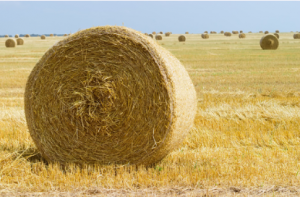Posted on May 30, 2022
How To Choose The Best Baling Twine For Flower Shops
The different types of balers use a variety of baling twine to wrap their materials in a compact bale. These balers can use various materials, including newspapers, recyclables, and waste materials. Different types of baling twine come in different colours, strengths, and material styles. For your specific needs, you should consult the manufacturer’s manual. Here are some of the most common types of baling twine and their uses:
 If you’re looking for baling twine for flower shops, there are a few things you need to know before buying. Buying the wrong kind of baling twine will ruin your project. However, this buying guide will help you find the best baling twine. You can even find a local supplier. These stores will have a variety of baling twine for sale. You’ll save time and effort by buying the twine from a local store. Learn more by visiting https://www.silagewrap.com.au.
If you’re looking for baling twine for flower shops, there are a few things you need to know before buying. Buying the wrong kind of baling twine will ruin your project. However, this buying guide will help you find the best baling twine. You can even find a local supplier. These stores will have a variety of baling twine for sale. You’ll save time and effort by buying the twine from a local store. Learn more by visiting https://www.silagewrap.com.au.
There are some types of baling twine available, with the most popular ones being the Reyenvas twine and the PowerPress from the Armando Alvarez Group. You can read reviews about various baling twines by experienced users. One Lonely Farmer tested the Max2Twine and PowerPress twines. The Black Label twine is an eco-friendly option made from post-industrial waste.
You can choose braided twine or cross-strand twines for your baler. You can also purchase woven twines for your square bales. As square bales are larger than round ones, they need to be thicker. Thicker twines will hold your square bales more securely. Lastly, you should check for UV protection of the baler twine. In case of UV damage, you should buy UV-stabilised baler ties.
Baling twine can be recycled in many ways. You can reuse old blankets as seed beads for baling twine. You can also use leftovers from old blankets for making yarn. These remnants are perfect for weaving into a fine strand of yarn. You can also find a source for recycled blankets. You can even reuse baling twine in other ways, such as creating a hammock. If you’re looking for baling twine for sale, try searching online. You can even make one for your barn if you want to try it.
Aside from being an excellent material for making baler twine, this twine is also an eco-friendly choice for farmers. Many farms use baler twine for packing cereal crops. It can also be used to make bales for feeding livestock. It can also replace metal wire fences. You can buy various types of twine to make the best baling twine for your farm. But make sure you choose a high-quality baler that will last for years.
There are two types of balers: round and rectangular. The rectangular ones are larger and more pressurised, requiring thicker twine with higher tensile strength. They should run between 130 and 450 meters per kilo. And if you’re wondering whether to buy a round or rectangular baling twine, it is best to choose one with thicker twine because it doubles the life of your tying machine.
Baler twine can be made from several different fibres depending on the application. Some are made from polypropylene, a thermoplastic addition polymer derived from propylene monomers. Both materials are highly durable and resistant to wear and tear and are a valuable ally for capital savings. Baler twine is usually made of several components, but polypropylene’s primary raw material. Polypropylene is known for its strength, durability, and softness.
In addition to the materials used for twine, the type of baling twine you choose should also reflect the purpose of the baling machine. For example, if you use twine for waste disposal, you can choose biodegradable twine. Solar-degradable twine has a longer storage life before decomposing. Baling twine can also be recycled. Solar-degradable twine is one option that combines synthetic and sisal twine advantages. Solar-degradable twine costs only about 50 cents per bale, so the extra money spent should be offset by the time it takes to wrap bales. Learn more by visiting https://www.silagewrap.com.au.

